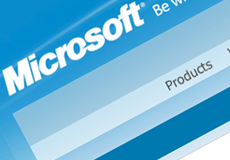Microsoft Files Patent for Multiplayer Head-Mounted Display
August 6, 2013
Microsoft has filed a patent application for a multiplayer gaming headset that could one day rival the Oculus Rift. The application, first filed in January 2012 and recently made public, includes technology related to voice interaction, eye-tracking, facial recognition, and various components for tracking head movement. If the patent application is more than a defensive measure, it could extend the Xbox platform into new hardware and new locations.
 “The patent filing includes a range of potential device scenarios, including the use of Organic Light-Emitting Diode (OLED) displays, eye scanning, microphones, and gyroscopic and accelerometer sensors to determine user head and body positioning when worn,” reports GameSpot. “The potential inclusion of three accelerometers and three gyroscopes would allow for head-positioning tracking, not unlike the technology found in the Oculus Rift.”
“The patent filing includes a range of potential device scenarios, including the use of Organic Light-Emitting Diode (OLED) displays, eye scanning, microphones, and gyroscopic and accelerometer sensors to determine user head and body positioning when worn,” reports GameSpot. “The potential inclusion of three accelerometers and three gyroscopes would allow for head-positioning tracking, not unlike the technology found in the Oculus Rift.”
The application (available on the U.S. Patent & Trademark Office site) “has a ‘focus on natural speech,’ something that is not unlike what Microsoft has been working on with both Windows Phone and Kinect,” explains TechCrunch. “The patent application drips with multiplayer gaming references: The gist of the headset isn’t to create a new computing platform for Windows, but instead to allow for greatly expanded gaming between several parties regardless of their location.”
Wearable computing, such as Google Glass and the the Nike FuelBand, is an emerging trend, one that has been generating a great deal of industry attention and media interest. The patent application shows that Microsoft is at least thinking about new hardware directions.
TechCrunch suggests that the Microsoft device has some similarities to the Oculus Rift headset (currently up for pre-order): “Like the would-be Microsoft device, the Oculus is also a gaming headset which extends the gaming experience by applying wearable technology directly to the user’s head. It’s worth noting, however, that the Oculus is a virtual reality experience, whereas the Microsoft device appears to be more focused on augmented reality.”

No Comments Yet
You can be the first to comment!
Leave a comment
You must be logged in to post a comment.